The highest point in North Dakota, known as White Butte, is home to a variety of fascinating animals. This location is a whopping 3,506 feet above sea level and is a part of both the Little Missouri National Grassland and the Badlands. Despite this, White Butte is actually privately owned by the Dennis family who live nearby.
Visitors are allowed to hike in the area, though they are encouraged to make a donation to help maintain White Butte. You can place your contributions in a small lockbox located in the parking area about one mile north of the trailhead.
What Kind of Terrain Supports the Animals of White Butte?
White Butte is part of the Badlands — a 190-mile stretch of rock and clay eroded over time to form unique shapes with a variety of colors. One of these shapes is called a butte, which is a smaller mountain or hill with steep sides and a flat top.
White Butte is named after the white rock and soil containing bentonite in the area. The walk leading up to the trailhead contains a variety of prairie grass, shrubs, and other vegetation.
Given its location, there are a number of animals you might see while hiking White Butte, and some can be dangerous. Be sure to stay on the trails. Keep your dogs leashed and your eyes peeled for these 10 animals lurking at the top of White Butte.
1. Domestic Goats and Cattle
Some of the first animals you may encounter while beginning or ending your White Butte hike are the not-so-wild goats and cattle of the region. A hiker posted his journey and encounter with a friendly herd of goats on James Suits Photography.
The first part of the route winds through private farmland before reaching the rocky butte. It was on his way back from the butte, while re-entering the grassy farmland that this hiker was approached by a very friendly herd of domestic dairy goats.
In fact, these goats were so social he could hardly get them to stop following him. Other hikers also spotted herds of domesticated cattle in the area keeping an eye on visitors.
Note: Be sure to close the cattle gate at the trailhead before setting off on your hike.
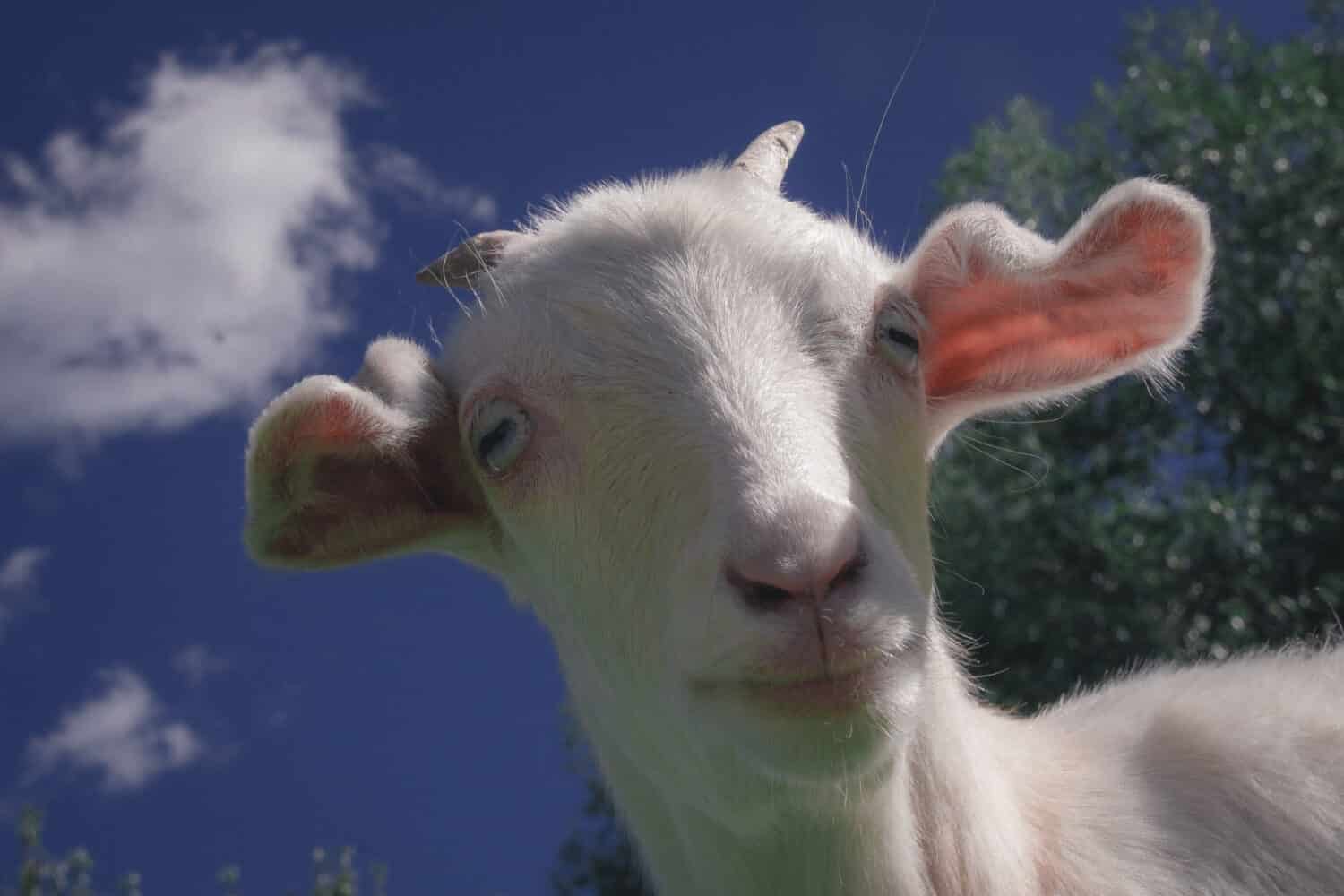
You might encounter a friendly domestic goat while hiking around White Butte.
©Sherry Sinclair/Shutterstock.com
2. Thirteen-Lined Ground Squirrel
You might spot a variety of small rodents while visiting White Butte. One such creature is the thirteen-lined ground squirrel. These creatures (sometimes called striped gophers) are named after the striking pattern of white lines and spots on their bodies.
Ground squirrels make their homes in burrows from sandy soil and loam in areas with short grass. They typically feed on seeds, grass, and leaves, as well as small insects and lizards, according to US Forest Services.
Thirteen lined ground squirrels spend the fall fattening up in preparation to hibernate. They stay tucked away in their dens during the winter and typically emerge again in April or May.

The thirteen-lined ground
squirrel
is an interesting creature with a unique pattern.
©BT Images/Shutterstock.com
3. Black Tailed Prairie Dogs
Prairie dogs are another common small mammal in the southwestern region of North Dakota. This species is actually a type of ground squirrel that makes its home in the grasslands of North America. In fact, they are biologically related to many other common critters such as groundhogs, chipmunks, and marmots.
In North Dakota, black-tailed prairie dogs make their home in the Little Missouri National Grasslands complex where White Butte lies. They prefer areas with short vegetation and construct complex burrows in the ground.
Black-tailed prairie dogs are currently facing a major loss of habitat thanks to the conversion of grassland to agricultural land, according to the North Dakota Game and Fish Department.
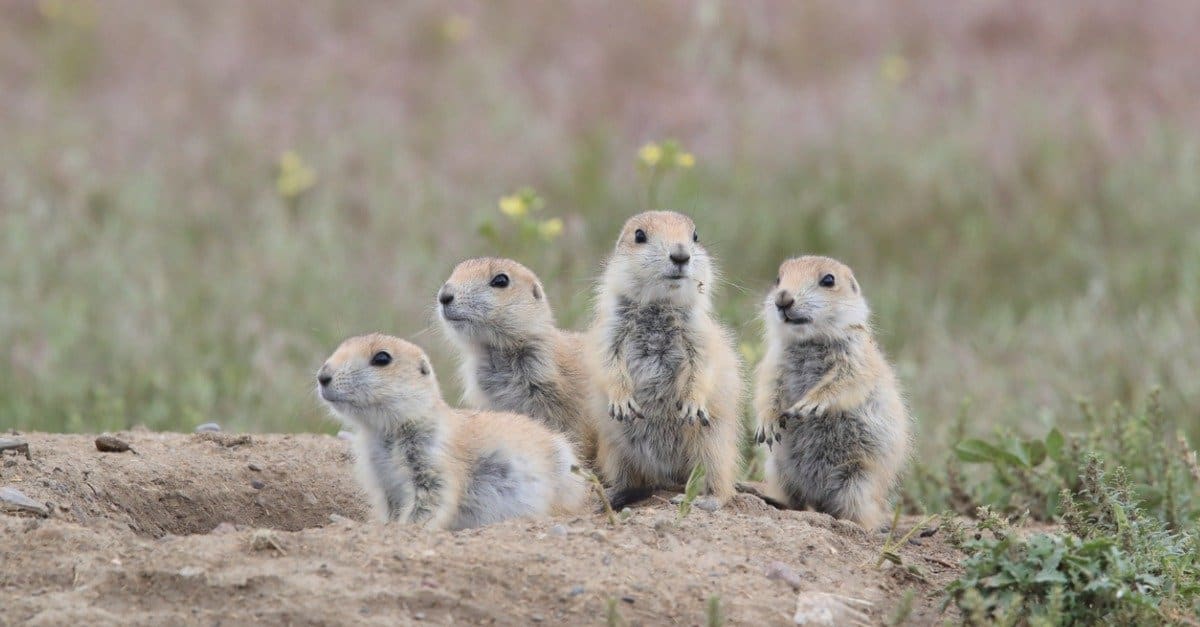
Male prairie dogs fight to establish dominance.
©Frank Fichtmueller/Shutterstock.com
4. Jack Rabbit
Both white-tailed and black-tailed jackrabbits make their homes in the Badlands. The white-tailed jackrabbit (also known as the prairie hare) is more likely to appear in the hiking areas of White Butte.
These creatures make their home in plains, prairies, and meadows. In some places, such as Colorado, they may live in elevations as high as 10,000 feet.
White-tailed jackrabbits are herbivores that feed on grasses and shrubs. They have exceptionally large ears and according to the Minnesota Department of Natural Resources, can jump 10 feet and reach speeds of up to 40 mph.

The white-tailed jackrabbit can reach speeds of up to 40 miles per hour.
©Tom Reichner/Shutterstock.com
5. Prairie Rattlesnakes
Not all of the animals of White Butte are quite as cute and friendly as the area’s goats and squirrels. Hikers should always be on the lookout for snakes and watch where they step. Fortunately, there is only one venomous species in the area – the prairie rattlesnake (Crotalus viridis.)
Prairie rattlesnakes grow up to five feet long. They are venomous pit vipers that are usually light brown with darker-colored patches. Due to their color, prairie rattlesnakes may blend in with the rocky or dirt terrain in White Butte.
As their name suggests, prairie rattlesnakes rapidly vibrate their tails to make a sound for warding off predators. The shaking vibrates individual segments of the tail to create a rattling sound, according to National Park Services. Prairie rattlesnakes prey on small rodents in the area such as mice, small birds, gophers, and prairie dogs.
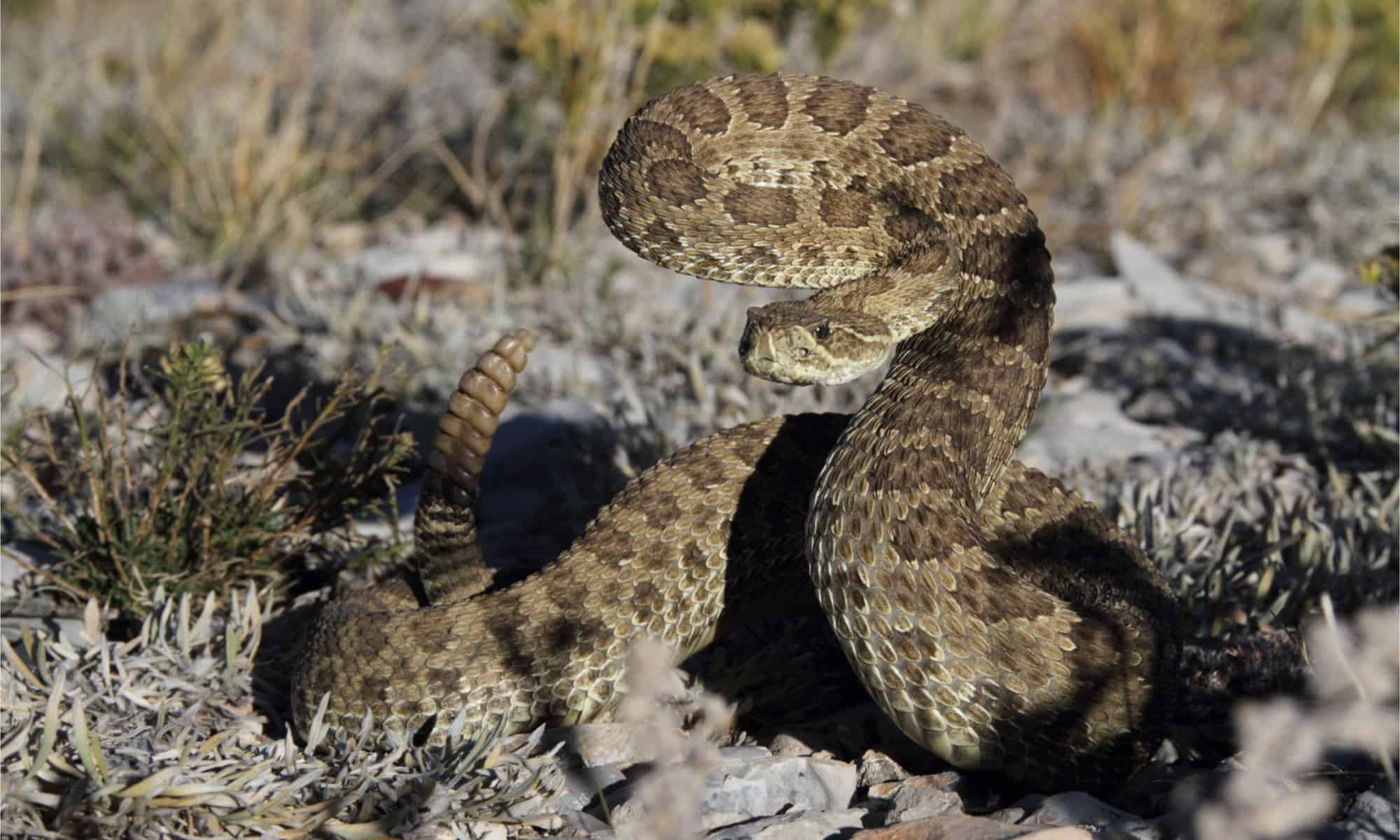
There are some 50 species of rattlesnakes, but only one of them, the Prairie rattlesnake, lives in North Dakota.
©Harris Motion Photo/Shutterstock.com
Rattlesnake Safety in White Butte
Prairie rattlesnakes are most active from April to May. Hikers should always be cautious of rattlesnakes and keep their eyes peeled to ensure they don’t accidentally step on them. Generally, prairie rattlesnakes are not aggressive.
The best way to prevent a bite is to keep an eye out for these creatures and give them their distance. Never try to handle prairie rattlesnakes and allow them to pass in front of you on the trail rather than trying to step over them. Prairie rattlesnakes are equipped with a powerful venom and a bite from these snakes is a medical emergency.
6. Coyotes
Coyotes are another potentially dangerous animal that makes their home near White Butte. Hikers have reported spotting coyotes or hearing the creatures howling in the distance. Generally, coyote attacks on people are rare, but visitors to White Butte should still be cautious.
Coyotes have been known to attack humans and can be especially dangerous to children or pets. Keeping your children close and pets on a leash is a good way to stay safe. Never feed or attempt to interact with a coyote.
If a coyote comes too close, The Humane Society recommends using scare tactics (called “hazing”) such as yelling or making loud noises to help reinstill their natural fear of humans and get them to run away.

Coyotes are sleek animals with large ears and a pointed snout.
©iStock.com/dmodlin01
7. White-Tailed Deer
White-tailed deer are one of the most populous creatures in the country and are found in almost all fifty states. They are also the most common big game in North Dakota.
These animals occupy the Badlands and Little Missouri National Grassland, so you may catch a glimpse of them while hiking White Butte.
White-tailed deer browse for buds, leaves, and seeds from a variety of trees. They are most active at dawn and dusk and may be spotted alone or in groups according to the North Dakota Game and Fish Department.
In the summer, white-tailed deer have a reddish brown coat that dulls in color during the winter. As their name suggests, these creatures are white on the underside of their body and tails.

White-tailed are named after the color of the underside of their bodies and tails.
©Tony Campbell/Shutterstock.com
8. Pronghorn
Although they are sometimes called the “American goat-antelope,” pronghorns are a unique species. Their closest living relatives are actually the giraffe and okapi.
They are typically reddish brown in color with distinct white markings. The horns of these creatures point backward and are used by males for fighting and to establish dominance.
Pronghorns prefer open terrain at higher elevations of around 3,000-5,900 feet. They are herbivores that eat a wide variety of plant food, including some especially tough vegetation such as cacti.
Pronghorn have a number of natural predators. Thankfully for them, they are also the fastest land mammal in the Western Hemisphere, with the ability to reach speeds of around 60 mph.
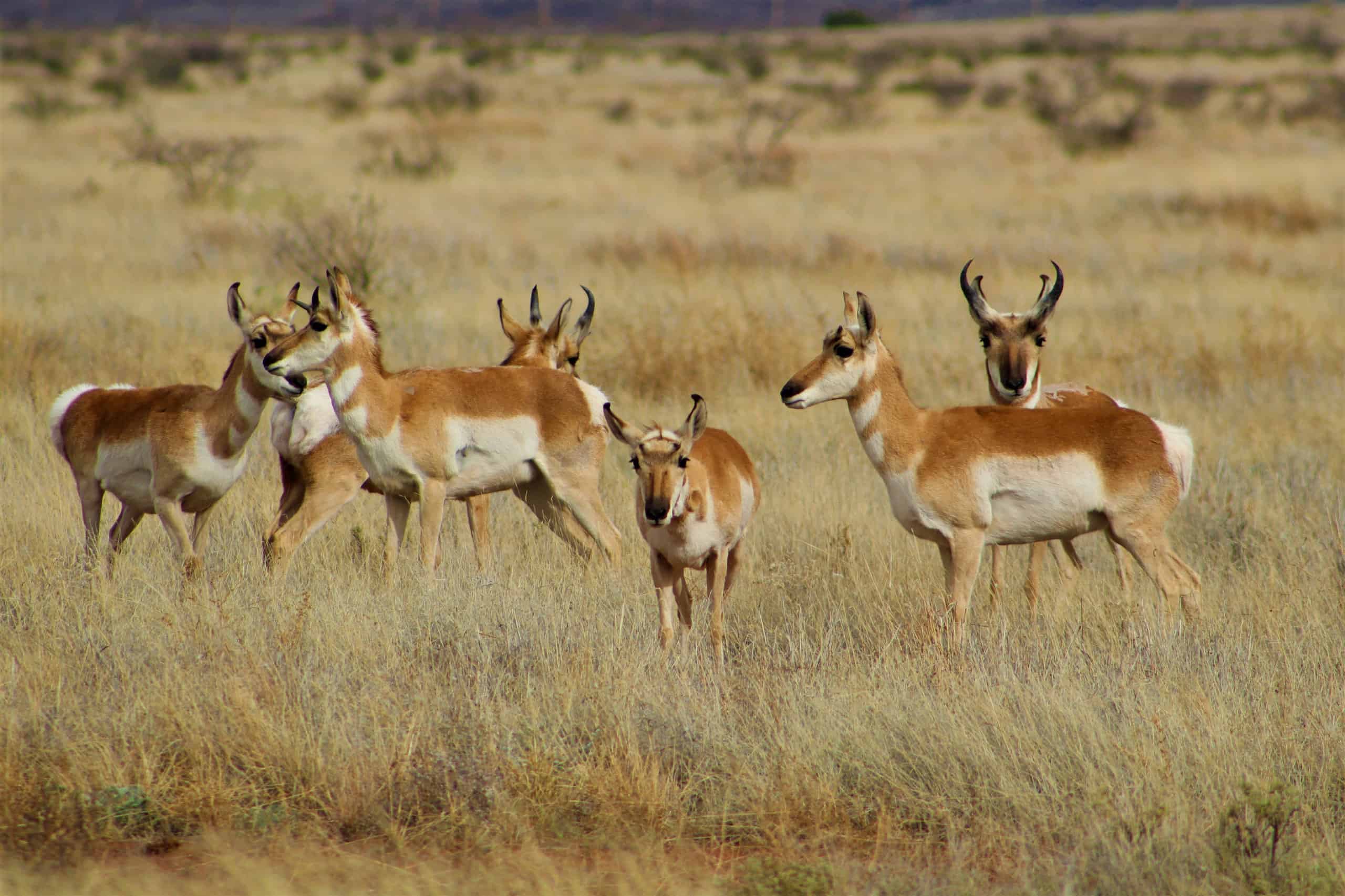
Male Pronghorns use their horns to assert dominance
©Charles Lemar Brown/Shutterstock.com
9. Sharp-Tailed Grouse
A number of birds make their home around White Butte and throughout the Little Missouri National Grassland. This list would be a little too long if we listed all of them, but one of the most common and stunning is the sharp-tailed grouse.
Grouse are heavily built medium-large gamebirds that are somewhat similar to chickens. They enjoy grassy prairies with small trees and shrubs and have intricate patterns with purple air sacs.
Grouse are a fun sight to see not just because of their unique look. One group of birdwatchers with Sabrewing Nature Tours reported seeing two male grouse perform their mating dances on the way to Little Missouri National Grassland.
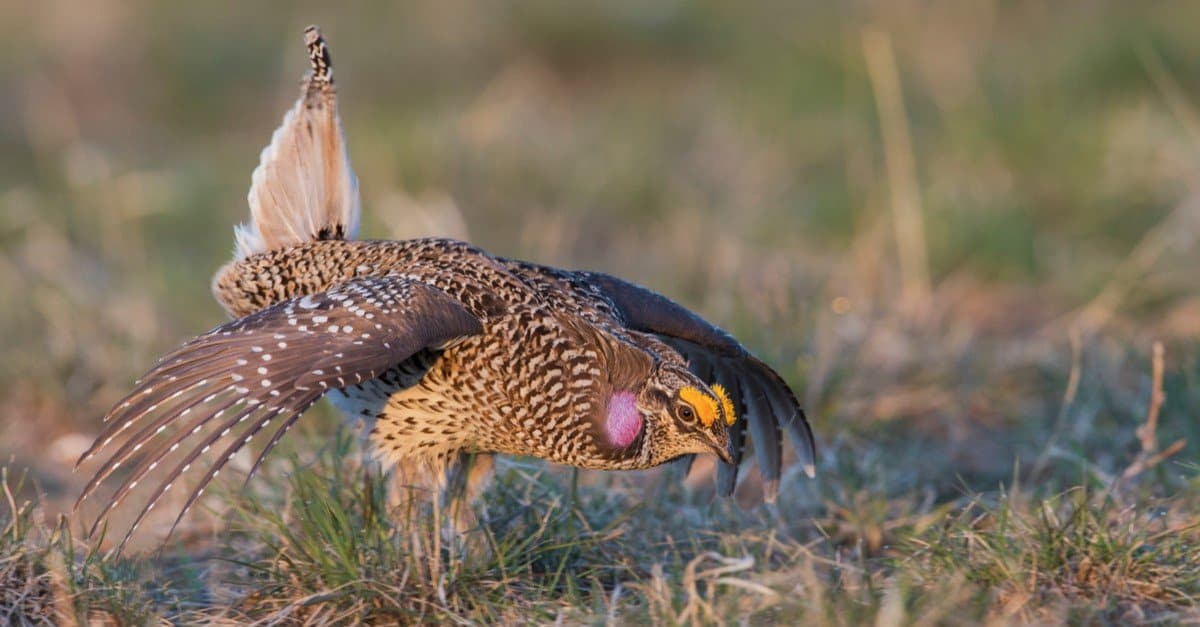
Sharp-tailed grouse perform a kind of “dance” during courtship.
©Danita Delimont/Shutterstock.com
10. Golden Eagle
Another bird that is worth keeping an eye out for around White Butte is the golden eagle. These gorgeous birds of prey are typically dark brown in color with golden feathers on the back of the crown and nape, giving these birds their distinct name.
Golden eagles make their home in rugged areas of the Badlands and buttes overlooking prairies, according to the North Dakota Game and Fish Department.
They are birds of prey that eat small mammals like ground squirrels and jackrabbits. However, golden eagles may also go after much larger creatures, including porcupines, coyotes, and pronghorns.
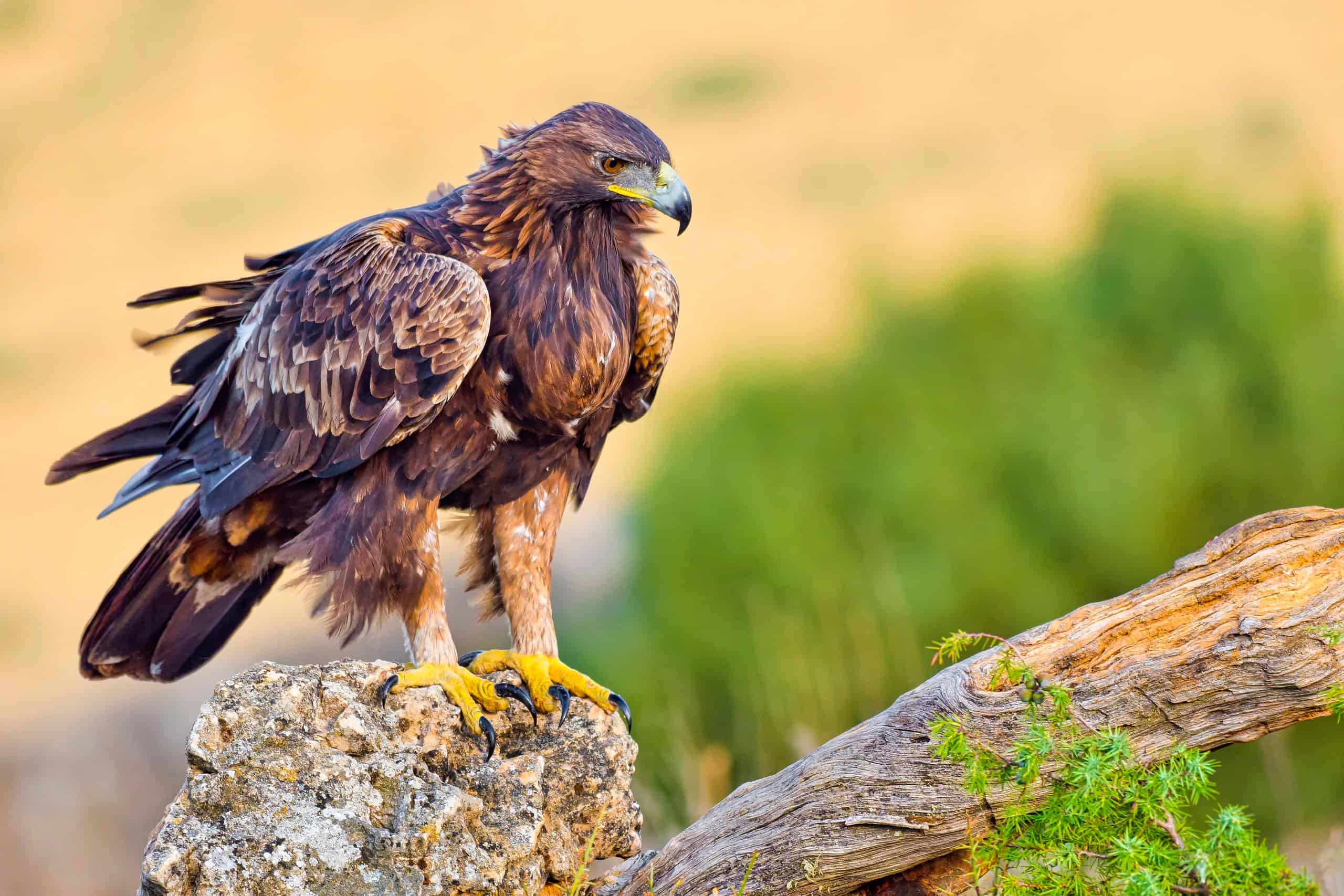
©Al Carrera/Shutterstock.com
Summary of Animals That Live Around White Butte
| Animal | Safety |
|---|---|
| Domestic Goats and Cattle | Be sure to close the cattle gate at the trailhead. |
| Thirteen Lined Ground Squirrel | Do not attempt to feed or handle. |
| Black-Tailed Prairie Dog | Do not attempt to feed or handle. |
| Jack Rabbit | Do not attempt to feed or handle. |
| Prairie Rattlesnake | Keep your distance. Do not step over, approach or try to handle. |
| Coyotes | Do not feed! Scare off with “hazing” tactics. |
| White-Tailed Deer | Keep a reasonable distance. |
| Pronghorn | Keep a reasonable distance. |
| Sharp-Tailed Grouse | Do not attempt to feed or handle. |
| Golden Eagle | Not known to attack humans, though they are powerful enough to kill one. |
The photo featured at the top of this post is © iStock.com/Tammi Mild
Thank you for reading! Have some feedback for us? Contact the AZ Animals editorial team.







